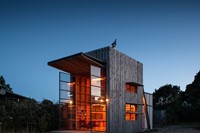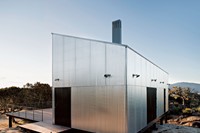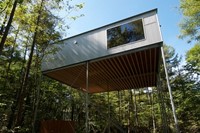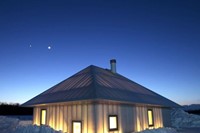super/collider explores the latest in ecologically sound architecture that works with the environment while being extraordinary to look at
Unique translucent corrugated plastic covers intertwined by exposed threaded bindings glistening with glue provide the housing for architect and design writer, Phyliss Richardson’s latest book, Superlight: Lightness in Contemporary Houses. The unusually light construction lures you in to uncover page after page of homely architecture porn – over 40 dwellings that are thoughtfully crafted and have minimal impact on the earth.
The abstract title sets the foundations as the book uncovers houses that live ‘lightly' on the land; ‘lightly’ meaning a structure that floats effortlessly in the tree tops and also those that have light impact on the earth. In many cases the practicalities of living in the sky, or on vast rocks, requires a certain amount of self-sufficiency anyway as the house manages at a distance from grounded pipes and sewers.
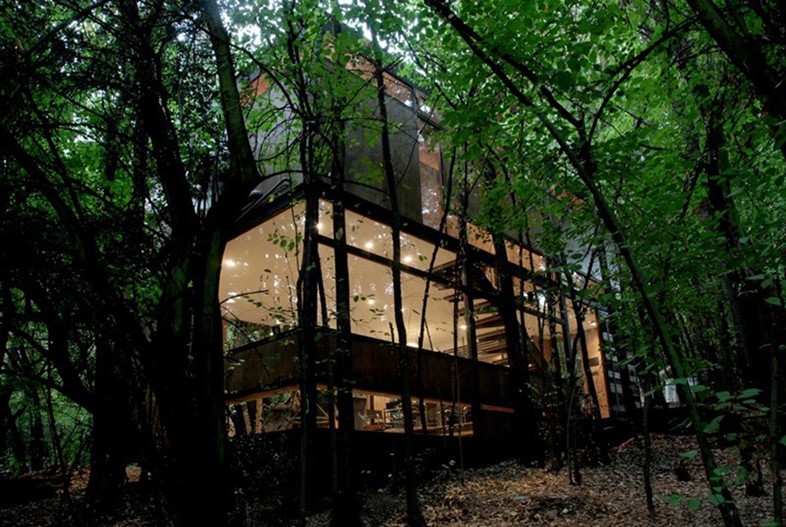
Superlight features numerous homes nestled comfortably among the trees but Casa Apollo 11 in Chile, designed by Parra+Edwards Arquitectos, embraces the woodland unlike any other. Trunks scaling its walls, this is a wooden airship that has crash landed, only to become the forest’s friend. We speculate that the future will be filled with responsive structures, and this is a small step in that direction, as both the seasonal lifecycle of the leafy neighbours and the immersive design make the inhabitants acutely aware of what is going on in their surroundings.
"Casa Apollo 11 is a wooden airship that has crash landed, only to become the forest’s friend"
Plant trunks become the building material in the Vietnamese Blooming Bamboo House, created by H&P Architects. This unusual beauty is constructed almost entirely of straight strong trusses of bamboo and rests above the earth on criss-crossed stakes, a flood-resistant haven created in reaction to the high waters that have started to return annually. The ‘blooming’ nature of the roof means there is constant air flow in the face of close, heavy clouds. Many of the ‘light’ houses featured use bamboo: a construction material that has become increasingly popular across Asia, where it is often plentiful and grows quickly.

The book also covers quite a few entries from the Solar Decathlon Competition held annually to encourage students to design and build sustainable living spaces. The CHiP House, designed by SCI-Arc and Caltech students, is potentially the most unusual architectural addition; a sort of quilted jacket for the home, it creates a thermal wrap around the exterior of the house providing the ultimate insulation.
Superlight gives a good balance of beautiful imagery, interspersed with thoughtful, informative words from Richardson, while the only caveat is that most people now live on top of each other in cities – a type of living the book does not really addressed. That aside it is still a joy to hold and explore, providing a hint of the possibilities out there. We may not have jackets around our homes anytime soon but the range of approaches means there is earth-friendly inspiration for every shelter.
Superlight: Lightness in Contemporary Houses is out now, published by Thames and Hudson.
Words by Abby Schlageter

